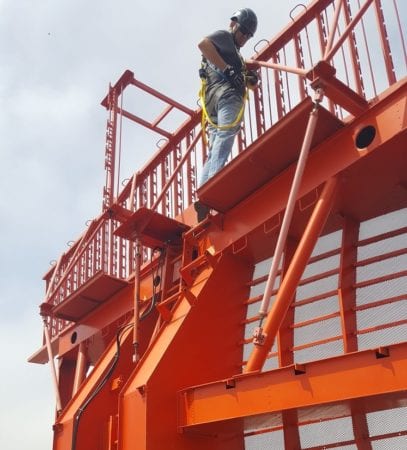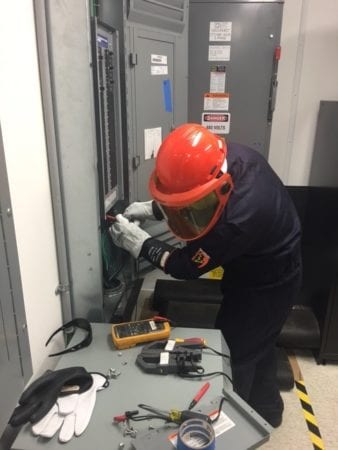When you’re on a flight as it begins its descent to the airport, you may be thinking about who you’ll be meeting, your transportation, or the weather outside. Not Joe Hajeie.
“I see it all in the back of my mind, picturing the equipment that’s guiding us in,” he says. “It’s a different experience when you know what’s involved in getting there.”
Hajeie, 39, serves on the front lines of aerial navigation as an airways transportation systems specialist with the Federal Aviation Administration. You’re probably not going to see him working when you fly, but you’ll be glad he and his co-workers are on the job repairing and maintaining ground navigational aides.
Technicians like Hajeie are based in and around U.S. airports working 24/7 to keep crucial navigation equipment running. This includes everything from airport surveillance radar, which helps controllers monitor traffic in a particular area, to VHF omni-directional radio range (VOR) stations that serve as navigational intersections pilots use to reach their destination.
A Day In the Life
Hajeie’s work is coordinated by the maintenance office at the Southern California FAA office in San Diego, which manages an airspace covering more than 9,000 square miles. On any given day (or night) he’s working an 8- to 10-hour shift doing scheduled maintenance and repairs at airports and facilities around Los Angeles, where he’s based.
After reporting for duty at a field office near LAX, Hajeie gets a list of work orders and discusses them with his supervisor. Jobs that require equipment to be shut down means he must check with FAA departments to ensure delays are kept to a minimum. The loss of a radar station for even a short period of time can cause significant delays to the massive number of flights that pass through the area.
“In some cases, coordinating the shut down takes longer than the actual work,” he says.
Trade School to the Tarmac
Hajeie began with the FAA as an intern out of high school, then enrolled in a trade school to learn about electronics technology, which has always been a passion for him. When he’s ready to start the day he uses an FAA vehicle, usually a sedan or light truck, to travel to various work assignments, sometimes logging as much as 150 miles per day. His main tool is a small laptop he uses to reference repair manuals and specifications and connect via WiFi or 4G to the maintenance control center in San Diego.
He keeps a tool kit with wrenches, screwdrivers and pliers as well as an ohmmeter for basic jobs. For the bigger maintenance and repair work there’s usually a set of specialized tools on-site, including oscilloscopes, spectrum analyzers and Vectron meters. Smaller jobs can often be done solo, but there are times when he’s paired up with another tech.
“When we’re working with high voltages we need to have someone else there on site for safety,”Hajeie says.
Solving Problems to Prevent Delays
Despite the planning and coordination that go into airway maintenance, things can go wrong. And when they do the pressure is on techs like Hajeie to get the system running again. A few years ago a contractor working on a runway building project piled a 20-foot mound of earth in front of one of LAX’s instrument landing systems (ILS), which guides planes down to the correct runway.
“We got a call that the ILS for this runway was out, and we couldn’t believe it when we saw a huge hill of landfill in front of the equipment,” Hajeie says. “We had to scramble out to the contractor and get that moved quickly, but also carefully. You’re dealing with some delicate instruments.”
Since he already knows the ins and outs of aircraft navigation, does Hajeie wonder about learning to fly himself?
“I stay pretty busy, so I can’t do it just now, but it’s on my bucket list.”




Share this: